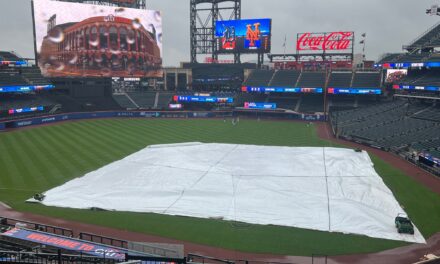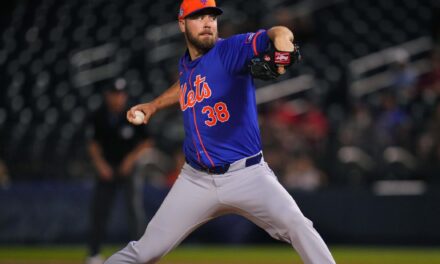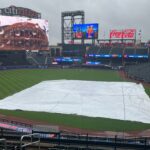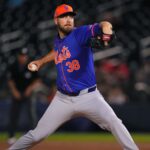Hours before the trade deadline, the Mets made another blockbuster move, sending star pitcher Justin Verlander, along with cash considerations, back to the Houston Astros in exchange for prospects Drew Gilbert and Ryan Clifford.
This article will focus on Clifford, who will report to the High-A Brooklyn Cyclones to begin his Mets’ career and slots in as the Mets’ current No. 6 prospect on MLB Pipeline.
Clifford, 20, was drafted by the Astros in the 2022 MLB Draft as a 11th round pick out of high school. Despite being committed to play for the prestigious Vanderbilt University, the Astros were able to entice the 6-foot-3 outfielder and first baseman to join the organization with a hefty overslot signing bonus worth around $1.25 million.

Their investment in the North Carolina product has certainly paid off, as Clifford is currently ranked 80th out of the top 101 prospects, per Baseball Prospectus. While he is not yet on the MLB Pipeline Top-100 list like Gilbert, he may soon reach that benchmark. In fact, Jim Callis, a senior writer for MLB Pipeline, tweeted earlier that Clifford would have ranked second out of the Astros’ organizational top 30 prospects next week if not for the trade.
The statistics certainly back up the recent hype around Clifford. He started the season for the Low-A Fayetteville Woodpeckers, and he batted .337/.488/.457 with two home runs, 15 RBIs, a .945 OPS, and 176 wRC+ in 25 games. Due to his outstanding start, he was promoted to the High-A Asheville Tourists, where he batted .271/.356/.547 with 16 home runs, 46 RBIs, a .903 OPS, and 138 wRC+ in 58 games.
Ryan Clifford solo HR for Asheville! His 14th HR of the season! #Astros pic.twitter.com/mQ7oPZ5pPz
— Astros Future (@AstrosFuture) July 21, 2023
In addition, Clifford posted a .276 ISO in High-A this season, which means that he has the ability to generate extra-base hits at an exceptional rate. This surge in power from Low-A to High-A has been accompanied by a significant decrease in his walk percentage. While he owned a walk rate of 20.7 percent in Low-A, that rate has since dipped to 8.4 percent in High-A. However, it is encouraging that his strikeout rate only increased marginally, going from 22.3 percent in Low-A to 24.8 percent in High-A. The Mets would probably like Clifford to find a happy medium between increasing his on-base frequency and still demonstrating the power that he has recently unlocked with his plethora of hard-hit balls during his High-A stint.
Furthermore, Clifford’s defensive ability is not as strong as his hitting, which leads many to believe that he will not stick in the outfield. This season, he has played first base and the corner outfield while acting as the designated hitter in other games. As a result, his ceiling will be heavily reliant on his ability to translate his game power to the MLB level. In fact, Joel Sherman, a columnist with the New York Post, reported on Twitter that an evaluator believes that Clifford will be a “good offensive 1B” once he reaches his potential.
Overall, the acquisition of Clifford will provide the Mets’ farm system with a potent bat that could climb through the ranks quickly. Many accounts state that Clifford has a mature approach that results in an abundance of hard contact, which has certainly been the case in Asheville this season. The Astros were understandably reticent to give away Clifford, as he has a picturesque left-handed swing that will be exciting to watch throughout his Mets’ tenure. If he can work on his high strikeout rate and low walk rate, Clifford can become an offensive powerhouse for years to come.















